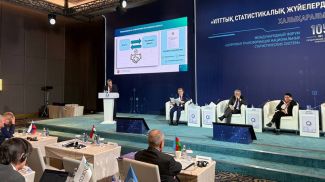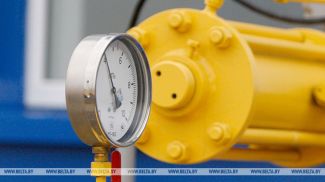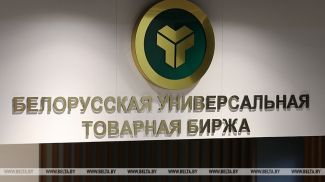
Photo courtesy of the CIS Executive Committee
SOCHI, 26 March (BelTA) – There are plans to set up a center for additive technologies at premises of an industrial enterprise in Belarus. The center will take care of 3D printing parts and components for machines, vehicles, and equipment, BelTA learned from Ilya Kavelashvili, Director General of Rusatom - Additive Technologies, Rosatom’s integrator for additive manufacturing business, on the sidelines of the international forum Atomexpo in Sochi.
Ilya Kavelashvili stressed that as a leader in the field of additive technologies Rosatom has achieved substantial results along the entire manufacturing chain: a lineup of 3D printers leveraging various printing technologies has been created, software has been developed, the corporation also makes metal powders and offers 3D printing as a service. Belarus will develop this area in association with Rosatom. There are plans to set up a joint center for additive technologies, which will have Russian and Belarusian equipment and will offer shared access to it, the executive said. “As the integrator our company is responsible for the development of additive technologies in Russia and will help assimilate these technologies in Belarus. More than ten technological audits of Belarusian enterprises have already been carried out. The audits will continue in April. As many as 50 questionnaires from Belarusian enterprises have been received. We are deciding what parts and components can be 3D printed. This information will be used to choose the center’s equipment and shape its technological paradigm. And most importantly, Belarusian partners need to decide where the center will be located,” Ilya Kavelashvili said.
In his words, the center should be physically located at some industrial enterprise. From the legal point of view it is likely to be a joint venture, with Rosatom and Belarus owning equal shares.
The main factors driving the growth of additive technologies are automobile manufacturing, engine manufacturing, aircraft manufacturing, unmanned aerial vehicles, and electronics. “We discuss interaction options with Belarusian enterprises operating primarily in these spheres. I can tell you more: these enterprises want the center to be set up primarily at their premises. We are pleasantly surprised that there are very many companies willing the center to open on their premises,” the Rusatom - Additive Technologies director general noted.
In his words, investments in the project are estimated at RUB400-500 million. “Everything will depend on the number of printers and auxiliary equipment. In addition to 3D printers this technology requires a lot of other equipment. Such as furnaces, lathe machines, grinding machines, material-cutting machines and so on. The Belarusian side may provide this equipment to the center,” Ilya Kavelashvili added.
Rosatom has already established cooperation with the Belarusian company Belenergoremnaladka. “We have already realized many 3D printing contracts. They see benefits of these technologies and every request from them is more and more interesting. We make parts of them. They specialize in power equipment maintenance. In light of recent events buying components may be complicated. Especially components made by certain Western manufacturers. Additive technologies allow printing these goods,” the executive noted.
Academic Secretary of the Department of Physical and Technical Sciences of the National Academy of Sciences of Belarus Sergei Shcherbakov said that the Belarusian side is most of all interested in 3D printing with metals. “And Rosatom has competences and technologies for making 3D printers that use metal. The National Academy of Sciences of Belarus works with various materials used in 3D printing such as powders and composites. We are also working on chemical compounds of polymer materials for 3D printing. But the key thing for broad adoption in the manufacturing sector right now is 3D printing with metals. This is why it is interesting for us to work with Rosatom on a shared-access center where our researchers and developers could create their prototypes and try them in practice. And certainly, accomplish practical tasks regarding the substitution of imported parts and components. Technological sovereignty develops along two avenues: import substitution and creation of new specimens of machines, equipment, and vehicles. The new center will allow people specializing in either kind to work there,” Sergei Shcherbakov said.
The international forum Atomexpo is a major exhibition and business venue where the current state of the atomic industry is discussed and trends of the industry’s future development take shape. Taking part in the forum are heads of key companies of the world atomic industry, government agencies, international and public organizations, leading experts. A Belarusian delegation is also taking part in the forum.













